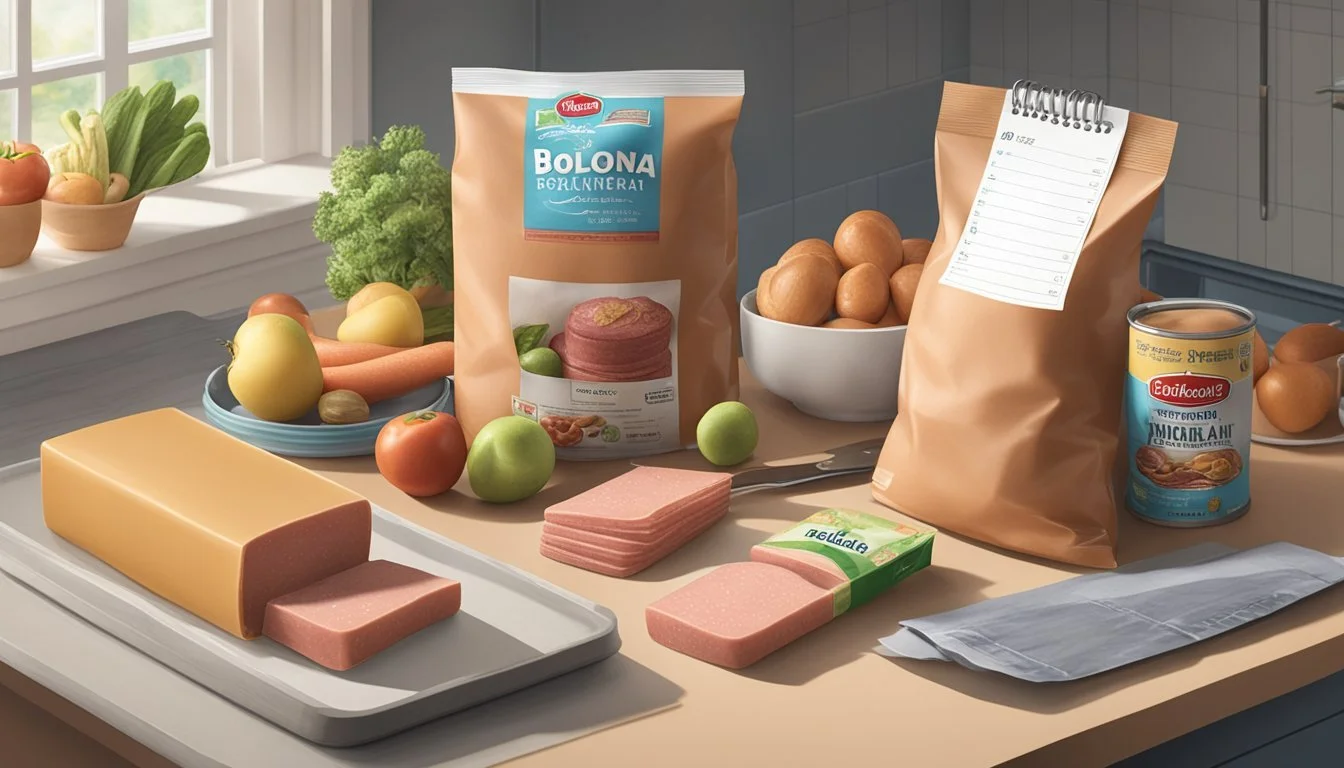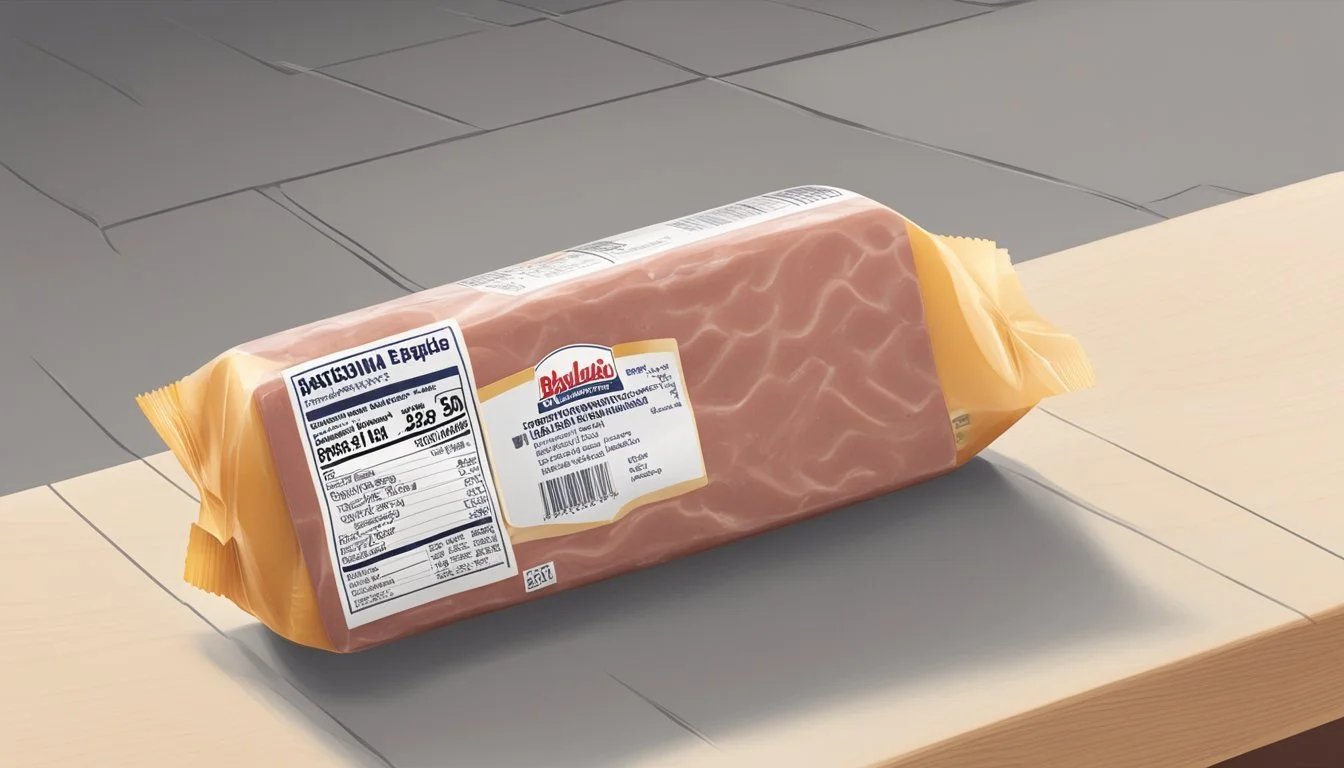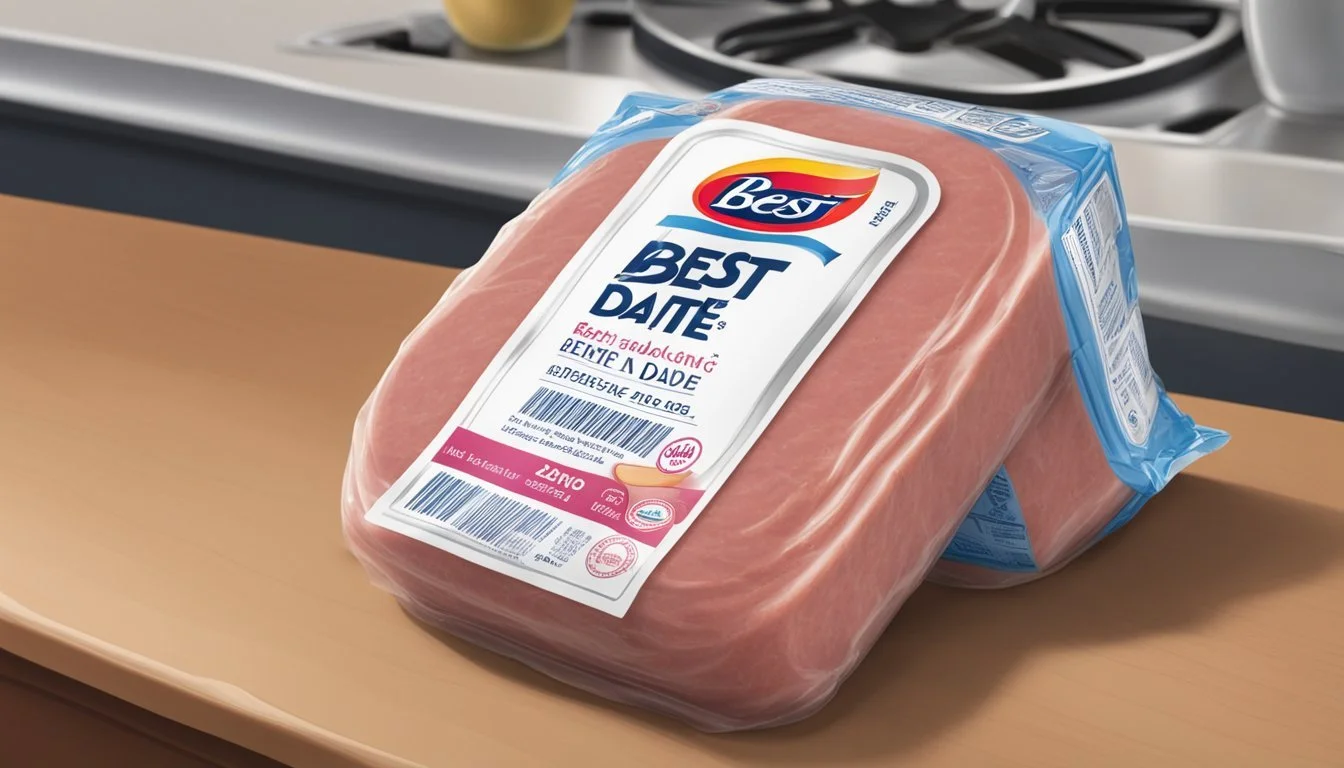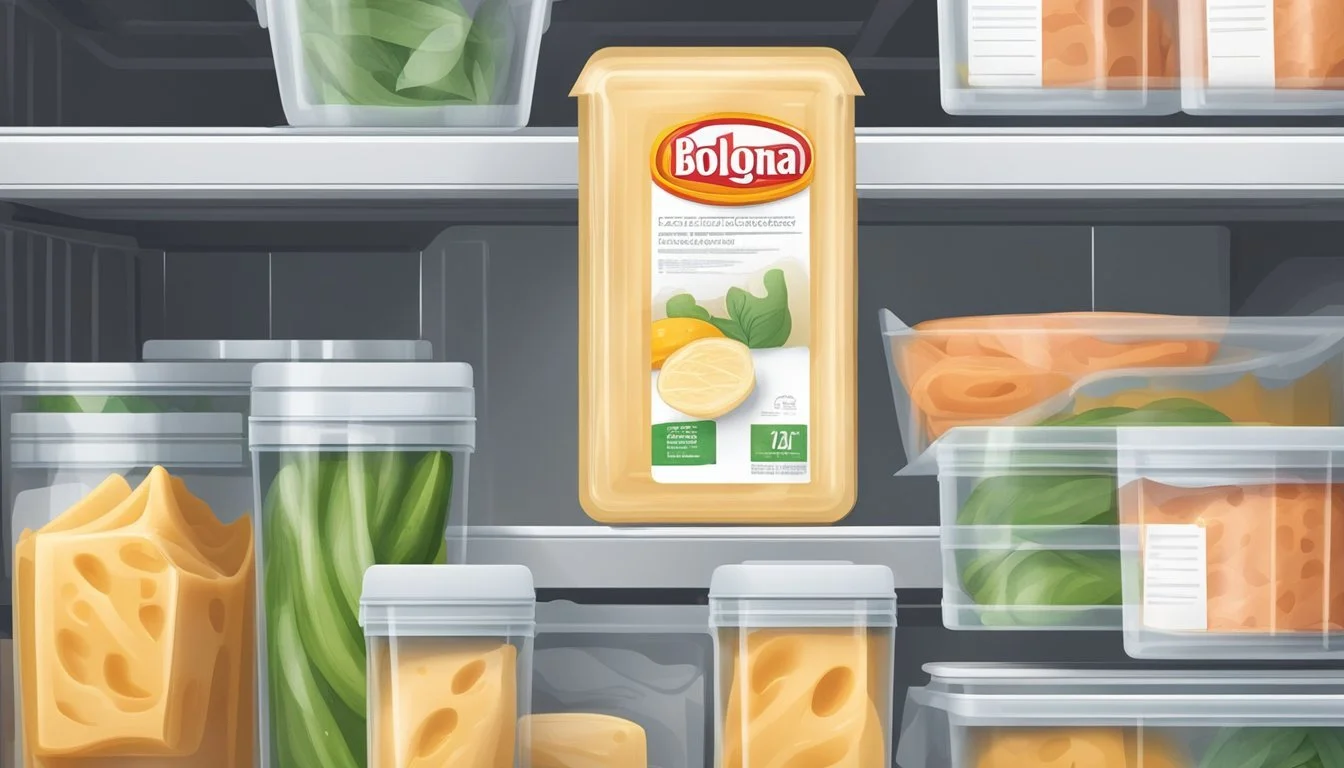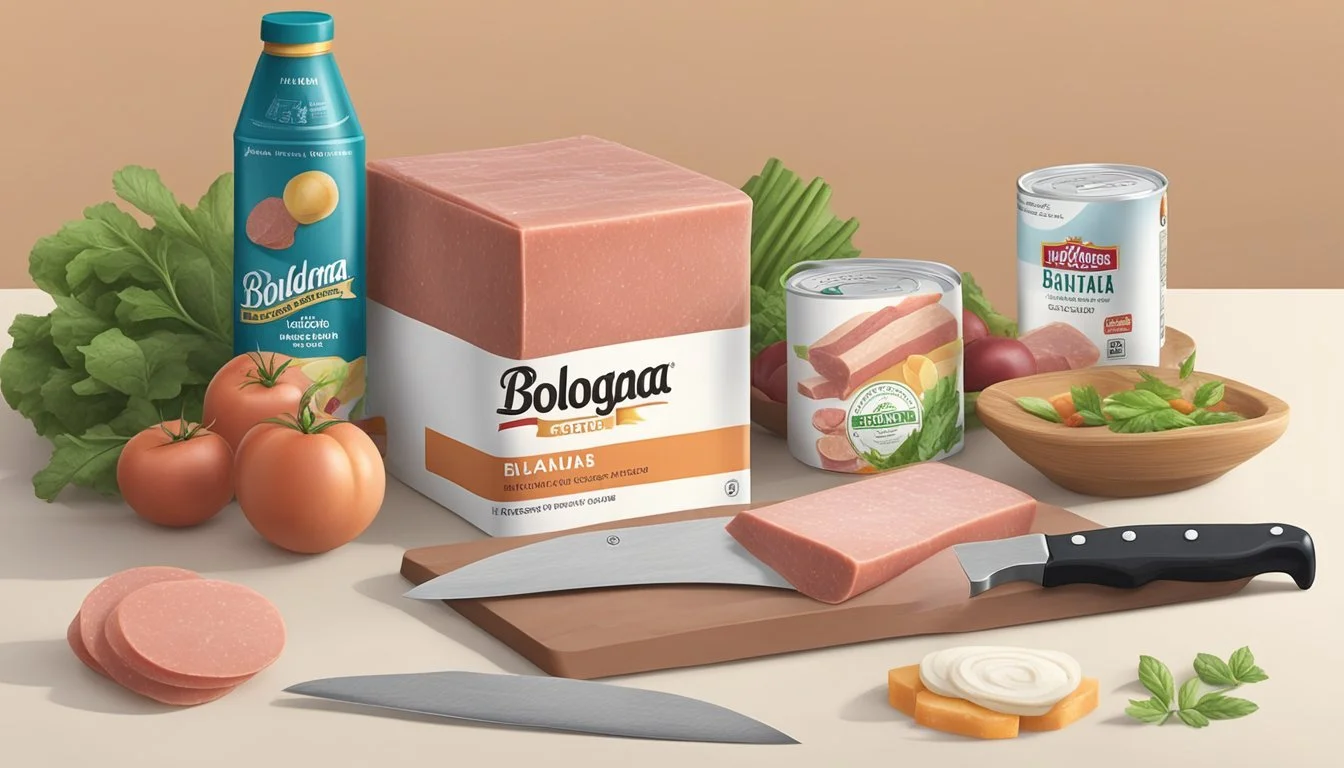Does Bologna Go Bad?
Understanding Shelf Life and Spoilage Signs
Bologna, a popular deli meat, is known for its convenience and versatile use in sandwiches (What wine goes well with sandwiches?) and snacks. However, like all perishable foods, it has a finite shelf life and can spoil. The shelf life of bologna depends on a variety of factors, including the way it is processed, packaged, and stored. Typically, packaged bologna can last longer due to preservatives and specific packaging technologies that extend its freshness.
It's safe to consume bologna when it retains its characteristic pink color and has no off-putting odor. Once opened, it should be kept refrigerated to slow down the growth of bacteria. In optimal conditions, fully cooked, vacuum-sealed bologna can remain fresh for up to two weeks in the refrigerator. Signs of spoilage include a dull color change, sour smell, and a slimy texture, indicating that the bologna is no longer safe to eat.
What Is Bologna?
Bologna is a popular type of processed deli meat, often made from a blend of meats and embraced for its smooth texture and savory flavor.
Origins and Varieties
Bologna has its roots in the Italian city of Bologna, where it was derived from mortadella, a traditional Italian sausage made of pureed or finely ground heat-cured pork interspersed with small cubes of lard. Modern bologna, especially in the United States, is a simpler product and comes in a variety of types:
Classic bologna: Typically made from pork, beef, or a blend of both.
Ring bologna: A variation that comes in a ring shape and is often of higher quality with a stronger flavor.
These varieties have evolved over time and have been adapted to various local tastes and preparation methods.
Ingredients and Types
Bologna is considered to be a processed meat because it undergoes various processing methods such as grinding, mixing with seasonings, and cooking. The main ingredients typically include:
Meats: Usually pork and beef, but can include chicken or turkey.
Fat: Integral for flavor and texture.
Seasonings: Salt, sugar, and spices among other flavorings for a distinct taste.
Different types of bologna may include additional ingredients such as pickles, olives, or pimentos. However, the central feature of bologna is that it is a finely ground meat product that is emulsified and cooked in a casing. Here's a list that highlights common types of bologna:
Standard bologna: A very smooth, finely ground sausage that is often smoked.
German-style bologna: Coarser in texture and flavored with garlic.
Lebanon bologna: A Pennsylvania Dutch variety that is smoked and cured, with a more robust, tangy flavor.
Understanding Bologna Preservation
Preserving the quality and safety of bologna requires understanding its shelf life and how packaging and storage conditions can impact longevity.
Shelf Life Fundamentals
The shelf life of bologna varies depending on the type. For example:
Unopened shelf-stable bologna can last up to 1 year.
Opened bologna typically has a shelf life of 1-2 weeks in the refrigerator.
These timeframes assume the product is stored properly, under ideal conditions. Any deviation may reduce the bologna's shelf life and can lead to spoilage.
Packaging and Storage Conditions
Proper packaging and storage conditions are critical for bologna preservation:
Airtight containers or plastic wrap can prolong shelf life by protecting bologna from exposure to air and contaminants.
For vacuum-sealed bologna, the seal should remain intact in the refrigerator to maintain freshness.
Shelf-stable bologna should be kept in a cool, dry place until opened, after which it should be refrigerated.
The ideal storage temperature for bologna is in a refrigerator set to below 40°F (4°C), as this helps prevent the growth of bacteria.
Signs of Bologna Spoilage
Detecting spoilage in bologna is critical for avoiding foodborne illnesses. Observing its visual appearance, smelling for distinctive odors, and noting any changes in texture can all serve as telltale signs that bologna has gone bad.
Visual Indicators
When checking bologna for spoilage, begin by assessing its color. Fresh bologna typically exhibits a pinkish-red hue. Any off-color development such as a shift to gray or brown suggests spoilage. This discoloration can range from a dull, faded appearance to a noticeable change like an orange-grey or a whitish tint.
Olfactory Clues
The smell of bologna is a powerful indicator of its condition. Fresh bologna may possess a slightly sweet aroma, characteristic of preserved meats. However, the presence of a foul or sour smell denotes that the bologna has likely spoiled. An unpleasant odor that is rancid or off-putting should be treated as a warning signal.
Texture Changes
Lastly, the texture offers clues about bologna's freshness. Ideally, bologna should feel firm to the touch, with a moist but non-slimy surface. If the texture presents as slimy or sticky, it is a sign of bacterial growth. Moreover, the presence of mold or any other form of fungal growth further confirms that the bologna is no longer safe to consume.
Safe Consumption Practices
When consuming bologna, one must be vigilant to ensure food safety and avoid foodborne illness. Carefully checking the meat for signs of spoilage and understanding the risks associated with consuming spoiled bologna are paramount.
Evaluating Bologna Safety
To determine if bologna is safe to eat, one should start by:
Checking the expiration date: Always adhere to the manufacturer's expiration date, as it's a guide to the product's optimal quality and safety.
Inspecting the appearance: Bologna should have a consistent pink color. A change to an orange-grey or whitish tint suggests spoilage.
Assessing the texture: If the texture of the bologna is slimy or sticky, this indicates bacterial growth and it's unsafe to eat.
Smelling the product: A foul or rancid odor is a clear sign that the bologna has gone bad.
Foodborne Illness Risks
Consumption of spoiled bologna can lead to food poisoning, manifesting symptoms such as vomiting and nausea. The risks include:
Harmful bacteria: Spoiled bologna can harbor bacteria like Salmonella or Listeria, which can cause serious health problems.
Bacterial growth: Improper storage, such as not refrigerating the bologna, accelerates bacterial growth, making it unsafe to eat.
Contamination: Always use clean utensils and surfaces to avoid cross-contamination, which can also contribute to bacterial presence and increase foodborne illness risks.
Optimal Storage Methods
Proper storage is crucial to maintain the quality and safety of bologna. Two primary methods are refrigeration for short-term, and freezing for extending its shelf life.
Refrigerated Bologna
For immediate to short-term use, bologna should be stored in the fridge. It is recommended to keep bologna at temperatures below 40 degrees Fahrenheit in order to inhibit bacterial growth. Once opened, bologna should be kept in an airtight container or rewrapped tightly in plastic wrap to maintain its freshness and prevent it from absorbing other flavors and odors from the fridge. Leftover bologna or slices from the deli should be consumed within a week to ensure safety and quality.
Fridge Storage Guidelines:
Temperature: Below 40°F (4°C)
Packaging: Airtight container or plastic wrap
Shelf Life: Up to 1 week after opening
Freezing Bologna for Longevity
For long-term storage, bologna can be frozen. To freeze bologna, one should first wrap it tightly in plastic, and for added protection, an additional layer of aluminum foil or a freezer bag can be used to guard against freezer burn. The key when freezing is to remove as much air as possible. Bologna can be stored in the freezer for up to 2-3 months. When it's time to use the bologna, thawing should be done in the refrigerator to ensure the bologna thaws evenly and to minimize the risk of bacterial growth.
Freezer Storage Guidelines:
Packaging: Tightly wrapped in plastic plus aluminum foil or freezer bag
Shelf Life: Up to 2-3 months
Thawing: In the refrigerator for even and safe thawing
By following these storage methods, bologna can be kept safe for consumption and its quality preserved for future use.
Maintaining Bologna Quality
Optimal storage conditions are essential for maintaining the quality of bologna. Controlling temperature and humidity are crucial whether the bologna is unopened or has been opened.
Temperature and Humidity Control
Maintaining the correct temperature is vital for preserving the freshness of both unopened and opened bologna. Unopened bologna can often be kept at room temperature if it's specifically designated as shelf-stable, but most types require refrigeration. The ideal temperature for storing bologna in the refrigerator is between 32°F (0°C) and 40°F (4°C). Exceeding these temperatures can accelerate the spoilage process. Similarly, high humidity levels encourage bacterial growth, so it is preferable to store bologna in a dry, cool environment.
Recommended storage conditions for bologna:
Shelf-stable (unopened): Pantry or cupboard away from heat sources
Refrigerated (unopened or opened): Fridge at 32°F to 40°F
Assessing Unopened vs. Opened Packages
Whether bologna is in an unopened or opened package significantly affects its shelf life. An unopened package of bologna can generally last longer due to its intact vacuum seal which protects against contaminants and oxidation. Depending on the type, this can mean several weeks to several months of freshness when properly refrigerated. On the other hand, an opened package of bologna is exposed to air and potentially to other contaminants, shortening its safe consumption window. Opened bologna is best consumed within a week to avoid spoilage.
Shelf life of bologna:
Unopened package: Check the product label for specific expiration dates.
Opened package: Typically one week in the refrigerator.
Utilizing Bologna in Cooking
In the culinary world, bologna is a versatile lunch (What wine goes well with lunch?) meat that can be used in a wide array of dishes beyond the classic bologna sandwich. The key to its use lies in the meat's unique flavor and texture which pairs well with various ingredients, whether in simple or complex recipes.
Incorporating Into Meals
Bologna can elevate many everyday meals with its rich, savory taste. It fits seamlessly into the following dishes:
Sandwiches: A staple in sandwiches, bologna adds substance and flavor. It can be used in cold sandwiches with cheese and fresh vegetables or fried for a hot and crispy twist.
Salads: Chopped or julienned bologna can be sprinkled over salads for added protein.
Casseroles: Bologna can be cut into bite-sized pieces and mixed into casseroles, where it melds with other ingredients during the baking process.
Incorporation Techniques:
Sliced: Thinly sliced bologna is perfect for layering in sandwiches and rolls.
Diced: Diced bologna works well in omelettes or sprinkled on top of salads.
Cubed: Larger cubes of bologna are ideal for stews and soups.
Creative Recipe Ideas
Bologna's adaptable nature makes it a great ingredient for those who enjoy experimenting with their cooking. Here are some creative ways to use it:
Bologna Rolls: Spread a slice of bologna with cream cheese, roll it up, and slice it into pinwheels, or wrap it around a pickle.
Stuffed Bologna: Stuff a thick slice of bologna with mashed potatoes and bake until crispy.
Bologna Soup: Incorporate cubed bologna into hearty soups or bean stews for added flavor.
Recipe Variations:
Grilled: Grilled bologna slices can be a unique addition to cooked dishes, bringing a smoky flavor.
Incorporating with Eggs: When making scrambled eggs or frittatas, bologna can be added for a complementary savory element.
Pairing with Cheese: Combine with different cheeses in a grilled cheese sandwich or as part of a cheese platter.
By considering bologna for various meal ideas, from quintessential bologna sandwiches to more elaborate casseroles and soups, one can introduce a traditional yet often underrated lunch meat into a multitude of dishes.
Insights on Bologna Selection
When purchasing bologna, customers should prioritize quality and understand labels to ensure they are selecting fresh and safe products.
Choosing Quality Bologna
Quality is paramount when selecting bologna. Customers often have the choice between pre-packaged and freshly sliced bologna from the deli. Freshly sliced bologna is typically perceived as fresher and may offer a superior taste and texture. On the other hand, brands like Oscar Mayer are known for their pre-packaged bologna deli meat and can also provide a satisfactory product that meets quality standards.
Here's a brief guide to indicators of quality bologna:
Look for a fresh, pink color without any signs of dullness or discoloration.
The texture should be firm and cohesive, not slimy or sticky.
For deli bologna, always ask for a sample to assess freshness before purchasing.
Label Interpretation
Understanding labels on bologna packaging is critical for selecting a product that is safe to consume. Customers should look for the sell-by date, which is a good indicator of how long the meat will remain fresh. While a sell-by date is not an expiration date, it suggests the timeframe within which the bologna should be consumed for optimal quality.
Here's a quick reference to label components:
Sell-by date: Indicates the last day the store should sell the product, and it's best to consume bologna shortly after purchase.
Ingredients: More ingredients generally indicate a more processed product. Look for bologna with fewer and recognizable ingredients.
Lunch meats like bologna can contain preservatives; check the label if you have dietary restrictions or concerns.
Nutritional Information: Provides insight into the fat, sodium, and protein content, helping customers make informed choices about their dietary intake.
By carefully selecting and interpreting the label on bologna packages, customers can ensure they bring home a product that is both delightful and safe for their meals.
Troubleshooting Bologna Issues
When it comes to determining the quality and safety of bologna, there are specific indicators that signal when the product may not be suitable for consumption. This section will cover how to address issues such as freezer burn and what to do when faced with expiration concerns.
Addressing Freezer Burn
Freezer burn is a common issue that can affect the taste and texture of bologna. If the bologna has white dried-out patches, indicating freezer burn, it may still be safe to eat, but the quality could be compromised. To prevent freezer burn, it's crucial to wrap bologna properly in airtight packaging before freezing. Should freezer burn occur, the affected areas can be cut away before using the remaining product.
Dealing with Bologna Expiration Concerns
Bologna's shelf life is limited, and it often varies based on whether it is store-bought or from the deli, and if it is opened or unopened. Shelf-stable bologna can last longer, but once opened, should be used within a specified timeframe.
Visual inspection: If the bologna displays a dull color or has mold growth, it should be discarded.
Smell test: Bologna that emits a sour or rancid smell is indicating spoilage and should not be consumed.
Touch test: When the texture of bologna becomes sticky to the touch, it's a sign that the product should be discarded to avoid the risk of foodborne illness.
For any bologna that has expired or shows signs of spoilage, it should be thrown out to ensure food safety. It is better to err on the side of caution and discard questionable bologna to prevent potential health risks.

